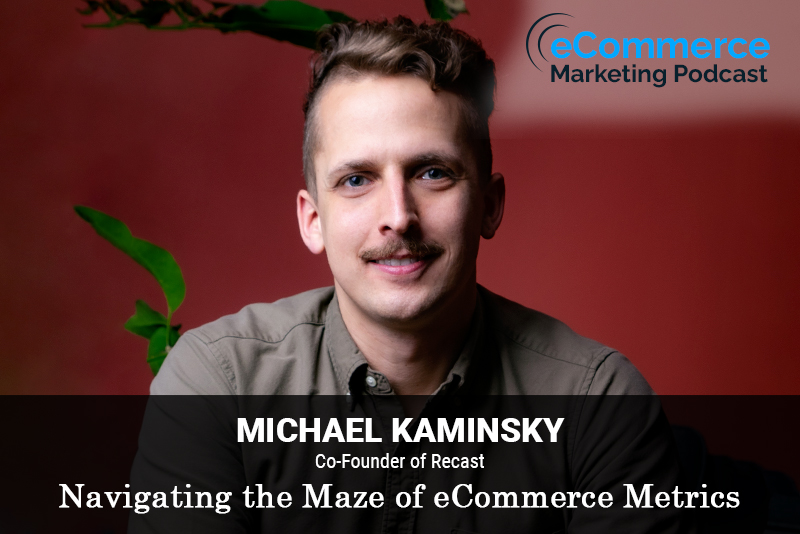
The eCommerce Marketing Podcast walks you through everything that goes into ecommerce marketing — from inbound marketing to paid advertising to conversions. Learn the strategies top marketing experts use to grow their businesses.
Michael Kaminsky is the co-founder of a next-generation marketing mix modeling startup, Recast. He’s a statistician, entrepreneur, and marketing science researcher who loves helping companies avoid wasted marketing spend through advanced analytics.
In this episode, you will learn
- The most common mistakes ecommerce operators make when measuring their marketing effectiveness
- Key pitfalls in marketing measurement that often lead to wasteful spending and how can businesses effectively recognize and avoid these traps
- What are the top recommendations for ecommerce operators to overcome the challenges in accurately measuring their marketing ROI
- How emerging technologies like AI and machine learning are transforming the landscape of marketing measurement in the ecommerce sector
- Future trends in ecommerce marketing measurement that businesses should prepare for
For show transcript and past guests, please visit https://www.ecommercemarketingpodcast.com
Or on YouTube at:
https://www.youtube.com/channel/UC3PgT0NOGzpdPGQtBK0XLIQ
Follow Arlen:
Twitter: https://twitter.com/askarlen
Facebook: https://www.facebook.com/arlen.robinson.7
Instagram: https://www.instagram.com/arlenyohance/
LinkedIn: https://www.linkedin.com/in/arlenrobinson/
Past guests on the ecommerce marketing podcast include Neil Patel, Nemo Chu, Luke Lintz, Luke Carthy, Amber Armstrong, Kris Ruby and many more.
Thanks for listening. Be sure to subscribe and leave a review.

In this episode of the eCommerce Marketing Podcast, host Arlen Robinson interviews Michael Kaminsky, co-founder of Recast, a next-generation marketing mix modeling startup. Michael, a statistician, entrepreneur, and marketing science researcher, shares his insights on how e-commerce businesses can avoid wasted marketing spend through advanced analytics.
Key Takeaways
- Introduction and Michael’s Background ([00:01] – [03:59])
- Michael’s journey from econometrician and healthcare research scientist to data scientist at Harry’s and eventually co-founding Recast.
- His passion for helping companies optimize marketing spend through advanced analytics.
- Common Mistakes in Marketing Measurements ([04:05] – [06:50])
- The importance of understanding incrementality: the causal relationship between marketing activities and sales.
- Differentiating between platform ROAS (Return on Ad Spend) and true incrementality.
- Pitfalls Leading to Wasteful Marketing Spend ([08:21] – [11:57])
- Over-reliance on in-platform ROAS numbers, which can be biased.
- The value of experimentation in marketing to determine true effectiveness of campaigns.
- Advanced Analytics in Enhancing Marketing Measurements ([12:25] – [18:54])
- Using the right tools for different business stages.
- Building an experimentation muscle: conducting tests and analyzing results to optimize marketing strategies.
- The role of sophisticated platforms like Recast for larger, more complex marketing environments.
- Impact of AI and Machine Learning on Marketing Measurement ([19:42] – [22:35])
- AI’s role in advanced targeting and optimization in marketing platforms.
- The need for skepticism and validation when using machine learning models for marketing measurement.
- Future Trends in eCommerce Marketing Measurements ([24:35] – [29:47])
- The shift towards omnichannel marketing and its impact on marketing effectiveness measurement.
- Preparing for changes in customer tracking and data visibility due to evolving privacy regulations.
Guest Info
Michael Kaminsky
Co-founder of Recast
LinkedIn: Michael Kaminsky
Twitter: @MikeKaminsky
Website: Recast











